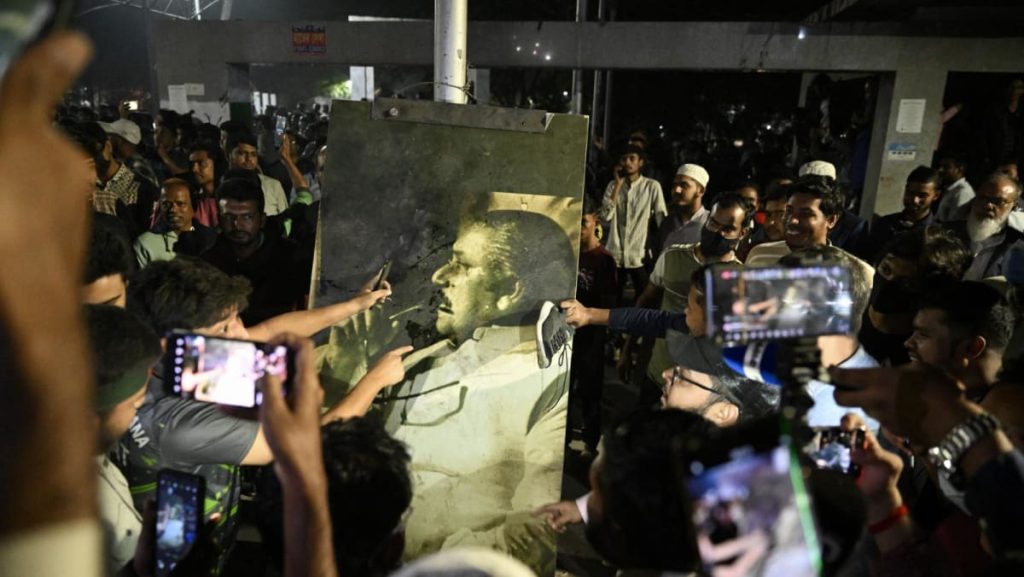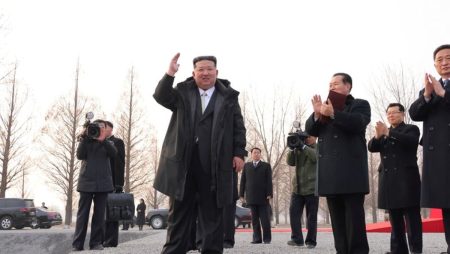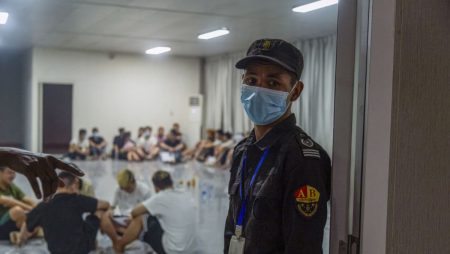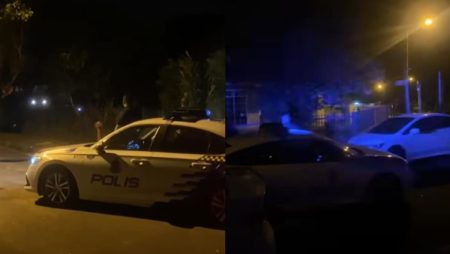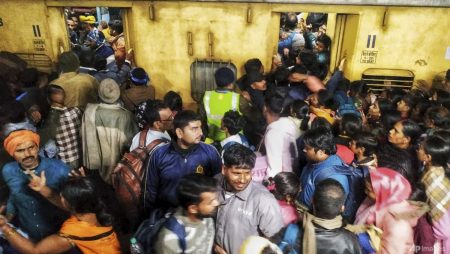Political Turmoil in Bangladesh: Protests and Clashes Erupt Over Controversial Leader
Introduction: The Spark That Ignited the Flames
The streets of Bangladesh have erupted in turmoil as reports surfaced that Sheikh Hasina, the 77-year-old former Prime Minister, would make a televised appearance from her exile in neighboring India. Defying an arrest warrant related to crimes against humanity, her potential broadcast has ignited a firestorm of protests across the nation. The unrest underscores deep-seated political divisions and lingering tensions that continue to plague the country.
A Nation in Protest: Demonstrations and Destruction
Protesters took to the streets, driven by outrage over Hasina’s defiance. The historical residence and museum dedicated to Sheikh Mujibur Rahman, Bangladesh’s founding father and Hasina’s late father, was among the buildings destroyed. This act of destruction drew sharp condemnation from civil rights groups, who view the site as a symbol of national heritage and pride.
Clash of Factions: Violence and Political Rivalries
The situation escalated with clashes between anti-Hasina demonstrators and supporters of her Awami League party. These confrontations highlight the intense political polarization, with each side holding the other responsible for the chaos. The interim government, led by Nobel laureate Muhammad Yunus, swiftly pointed fingers at Hasina, accusing her of inciting the violence through her actions.
A Call for Calm: Leadership’s Appeal for Peace
In an attempt to quell the rising tensions, Muhammad Yunus, the interim leader and Nobel Peace Prize winner, issued a public appeal for calm. His call for restraint, however, was quickly overshadowed by the targeted attack on members of the Students Against Discrimination (SAD) in Gazipur. This group, instrumental in organizing the initial protests against Hasina’s regime, found itself at the center of the storm.
Crackdown and Controversy: Government Response
The government’s response was swift and decisive, launching operations against gangs linked to the former regime. This move, while intended to restore order, has sparked concerns about heavy-handed tactics and potential human rights abuses. Critics argue that the broad crackdown risks ensnaring innocent civilians, failing to address the root causes of the unrest.
Critics and Concerns: A Lawyer’s Perspective
Prominent Supreme Court lawyer Snehadri Chakravarty dismissed the government’s actions as mere "eye-wash," suggesting that mass arrests are a superficial solution to deeper issues. His skepticism reflects broader worries that the operations may not improve the deteriorating law and order situation, serving instead as a temporary distraction from more pressing concerns.
Aftermath and Implications: A Fractured Democracy
The recent wave of protests and the government’s response have exposed the fragility of Bangladesh’s political landscape. The conflict between the interim government and remnants of Hasina’s regime threatens to further destabilize a nation already grappling with economic and social challenges. The involvement of powerful groups like SAD and the reaction of the international community add layers of complexity to this evolving crisis.
Conclusion: A Path Forward?
As the dust settles on the latest round of violence, Bangladesh stands at a critical juncture. The ability of its leaders to navigate this turmoil and address underlying grievances will shape the nation’s future. Whether through dialogue, reform, or continued repression, the path chosen by Bangladesh’s government will have far-reaching implications for its people and democracy.





